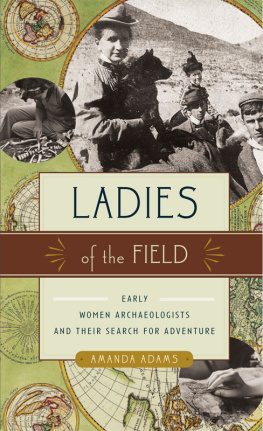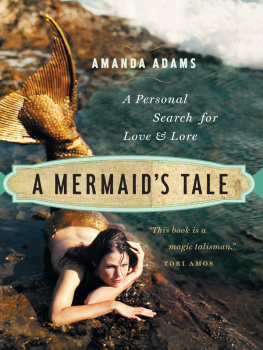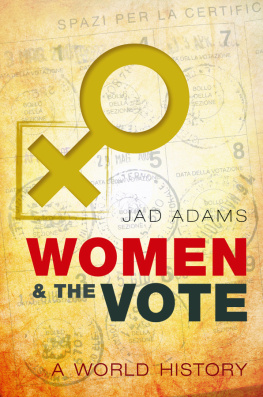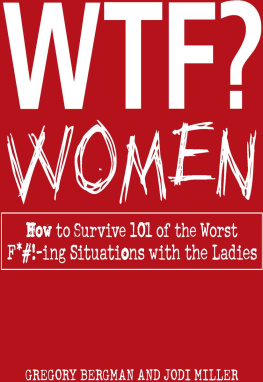LADIES of the FIELD
AMANDA ADAMS
LADIES of the FIELD
EARLY
WOMEN ARCHAEOLOGISTS
AND THEIR SEARCH FOR ADVENTURE

Copyright 2010 by Amanda Adams
10 11 12 13 14 5 4 3 2 1
All rights reserved. No part of this book may be reproduced, stored in a retrieval system, or transmitted, in any form or by any means, without the prior written consent of the publisher or a license from The Canadian Copyright Licensing Agency (Access Copyright). For a copyright license, visit www.accesscopyright.ca or call toll free to 1-800-893-5777.
Greystone Books
An imprint of D&M Publishers Inc.
2323 Quebec Street, Suite 201
Vancouver BC Canada V5T 4S7
www.greystonebooks.com
Cataloguing in Publication data available from Library and Archives Canada
ISBN: 978-1-55365-433- 9 (pbk.)
ISBN: 978-1-55365- 641-8 (ebook)
Editing by Nancy Flight
Copyediting by Lara Kordic
Cover and text design by Heather Pringle
Front cover photographs:
(top left) Hulton-Deutsch Collection/CORBIS ;
(top right) Smith College Archives, Smith College;
(bottom right) Harry Todd/Getty Images
Front cover background image:
The Map House of London/Stockbyte/Getty Images
Printed and bound in Canada by Friesens
Printed on acid-free, 100% post-consumer paper
Distributed in the U.S. by Publishers Group West
We gratefully acknowledge the financial support of the Canada Council for the Arts, the British Columbia Arts Council, the Province of British Columbia through the Book Publishing Tax Credit, and the Government of Canada through the Canada Book Fund for our publishing activities.

For the two great women in my life:
My mother, Kathy
And in memory of my grandmother Lorraine Shea
CONTENTS
INTRODUCTION
Field Notes
THE NILES GRAND DAME
Amelia Edwards18311892
ALL DRESSED UP IN A MANS SUIT
Jane Dieulafoy18511916
MEXICOS ARCHAEOLOGICAL QUEEN
Zelia Nuttall18571933
O, DESERT TIGER !
Gertrude Bell18681926
JUST LIKE A VOLCANO
Harriet Boyd Hawes18711945
ARCHAEOLOGYS BIG DETECTIVE
Agatha Christie18901976
LIKE A GLASS OF STONY WHITE WINE
Dorothy Garrod18921968
EPILOGUE
Excavations
T he first women archaeologists were Victorian era adventurers who felt most at home when farthest from it. Canvas tents were their domains, hot Middle Eastern deserts their gardens of inquiry and labor. Thanks to them, conventional ideas about feminine naturesoft, nurturing, submissivewere up-ended. The excavation shovel churned things up, flipped things over, and loosened the stays of gender a little. Ladies of the Field tells the stories of seven remarkable women, each a pioneering archaeologist, each a force of nature who possessed intellect and guts. All were convention-breaking and courageous women who burst into the halls of what was then a very young science.
For centuries, archaeology had been little more than a game of treasure hunting, a kind of cowboy science in which men traveled far and wide in search of gold and other trophies to bring home. Early archaeological exploration wasnt much different from looting; it was the khaki-clad branch of art history that emphasized digging and acquiring (nay, stealing) the art. Yet by the mid-nineteenth century, archaeology was shaking off its antiquarian robes. Women were beginning to enter the field, sending a bright signal not just that times had begun to change but that archaeology would too. The nineteenth century was a time when more and more women began rejecting common submission to the patriarchy. It was a time of increasing social turmoil: John Stuart Mills book The Subjection of Women (1869) was causing a stir in its demand for equality between the sexes. Working-class girls were receiving more education than ever before, and even inventions like the typewriter and the telephone eventually helped to bring women out of the house and into the workforce, where their talents could be at least moderately appreciated. Some women were becoming more vocal about their rights and their wants. For most this meant pursuing the right to vote in their home country or the opportunity to simply further their education. For others, it meant climbing mountains, becoming doctors or architects, and fighting for entry into scientific fields. For early women archaeologists, it was by their worksome of it sensuous travelogue, more of it formidable scholarshipthat they helped to reshape how we study the past.
The belief persists that women are not mentioned in the early annals of archaeologys history because they werent there. Not true. Women were present in the archaeological field by the mid- to late 1800s, but they were very few and were often given diminished scholarly treatment by male colleagues. As one scholar explains, Over the course of the last 150 years, a rigid power structure has been established in archeology. Although men have controlled this power structure throughout the history of the discipline, women have always made significant, if devalued, contributions to archeology. Those neglected contributions are emerging from the shadows today.
Before the 1920s and 30s, when archaeology became more firmly established and its doors were opened to women much more so than ever before, a handful of intrepid ladies chased their love of hidden history. Some worked part-time in museums; others had the financial means to contribute to digs and explorations. But an extraordinary few packed their bags, left the floral sitting rooms and pretty petticoats behind, and embarked on rigorous journeys that took them around the world in pursuit of archaeological wonders. This book is about them.
The pioneering female archaeologists were a diverse group: reckless to some, the smartest and most laudable ladies to others. The very first to scale the heights of a camel and touch patent leather shoe to Egyptian sand was Amelia Edwards. Eventually nicknamed the Godmother of Egyptology, Edwards sailed the Nile on a houseboat as early as 1873, sketching the pyramids and eventually making an archaeological discovery all her own.
Soon after, Jane Dieulafoy burst onto the scene with her archaeologist husband, Marcel. The two of them traveled thousands of miles on pounding horseback through what is now Iran. They set their sights on the ruins of Susa, and Dieulafoy became one of the most celebrated women in Europe, not just because of her archaeological prowess, but because she was a French lady who preferred to wear mens clothing. She even requested and obtained an official permit from the government authorities to do so.
The strong-minded Zelia Nuttall was born in San Francisco and schooled in Europe and eventually made her permanent home in Mexico City, where she became a prominent scholar in Mexican archaeology, a cultural icon in black lace shawl, and master gardener of ancient seeds. She played host to celebrities such as D.H. Lawrence and was a firm believer in modern scientific methods. Nuttall was also famous for finding ancient papers and objects the rest of the world had presumed lost.
Gertrude Bell deserves her own book, and luckily several have been written about her. A legendary lady, she was an insatiable traveler, brilliant intellectual, photographer, diplomat, strategist, and all-around Queen of the Desert. In Bells heyday, she was
Next page












